Conserving some newly found Roman cremation urns and their contents
, 13 December 2013
One item currently residing in the archaeological conservation laboratory is something that looks like a pot, but isn’t! It’s solid and actually made of soil that contains the cremated remains of a Roman who once lived at the Roman fort of Isca, now the town of Caerleon. This was contained inside a pot, but the vessel was cracked and broken so the pieces fell away leaving it's contents intact, held together by the dry clay soil.
Wherever you dig in Caerleon you often find the Romans have been there before you. So, not surprisingly, when digging the foundations of a garage a cremation urn was unearthed. The pot and contents was carefully excavated and brought back to the conservation lab at the National Museum of Wales in Cardiff for examination and treatment.
Once the soil had been removed from the outside it became clear the pot was seriously damaged. In damp ground this relatively low fired pottery becomes quite soft and therefore easily misshapen by the pressure of the soil around it. The building work above had squashed our pot forcing the rim and shoulders down inside it, while the sides had begun to bulge out and split like the segments of an orange. It was only the soil around the pot that was keeping it together, so as the soil was carefully removed in the lab, pieces of the pot (in archaeology referred to as pot sherds) started to fall away leaving a complete pot-shaped core of soil still containing the cremation. It even had a cast of the interior surface, including the ridges created by the potter’s fingers formed when the clay was being turned on the wheel.
Once the pot was fully dismantled and cleaned, all 105 pieces were put back together again, some areas were missing and hadn’t survived, but enough was retrieved to recreate the original shape. The pot was a bit reluctant at first to return to its original form because it had become misshape in the ground, but with gentle persuasion and patience it was successfully reconstructed, this did take a few days though.
The surface of the pot was also very powdery and every time it was moved or picked up it left a patch of orange powder behind. To stop further loss the pot had to be treated with a very dilute adhesive to help consolidate the surface, allowing it to be handled safely again.
When new the pot may not have looked orange, but white! There is evidence to suggest cremation vessels may have been coated on the outside in a white clay slip. The surface of our pot was too damaged unfortunately to say if that was the case here.
Was the pot an everyday storage jar selected to contain the cremated bones or was it made especially for the purpose? This question still intrigues archaeologists today, in the case of our pot the rim was badly damaged, but what survived was not the plain rim normally expected on domestic pottery, but a slightly indented, impractical frilly edge which might suggest it was especially made for the purpose. More evidence is required before we can be sure though.
The next stage is to excavate the soil block and retrieve the cremated bone and see if any objects were placed in the pot with the remains.

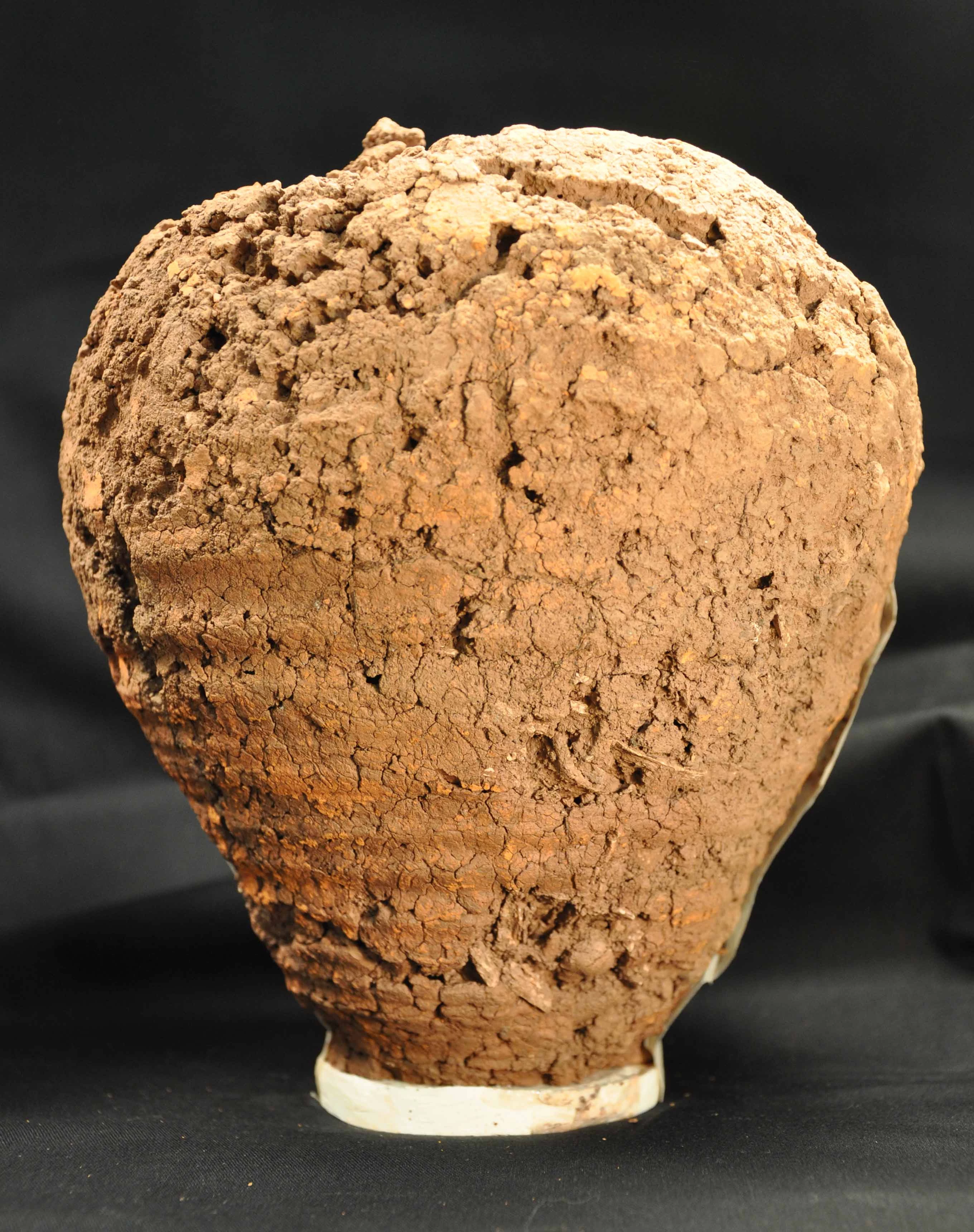

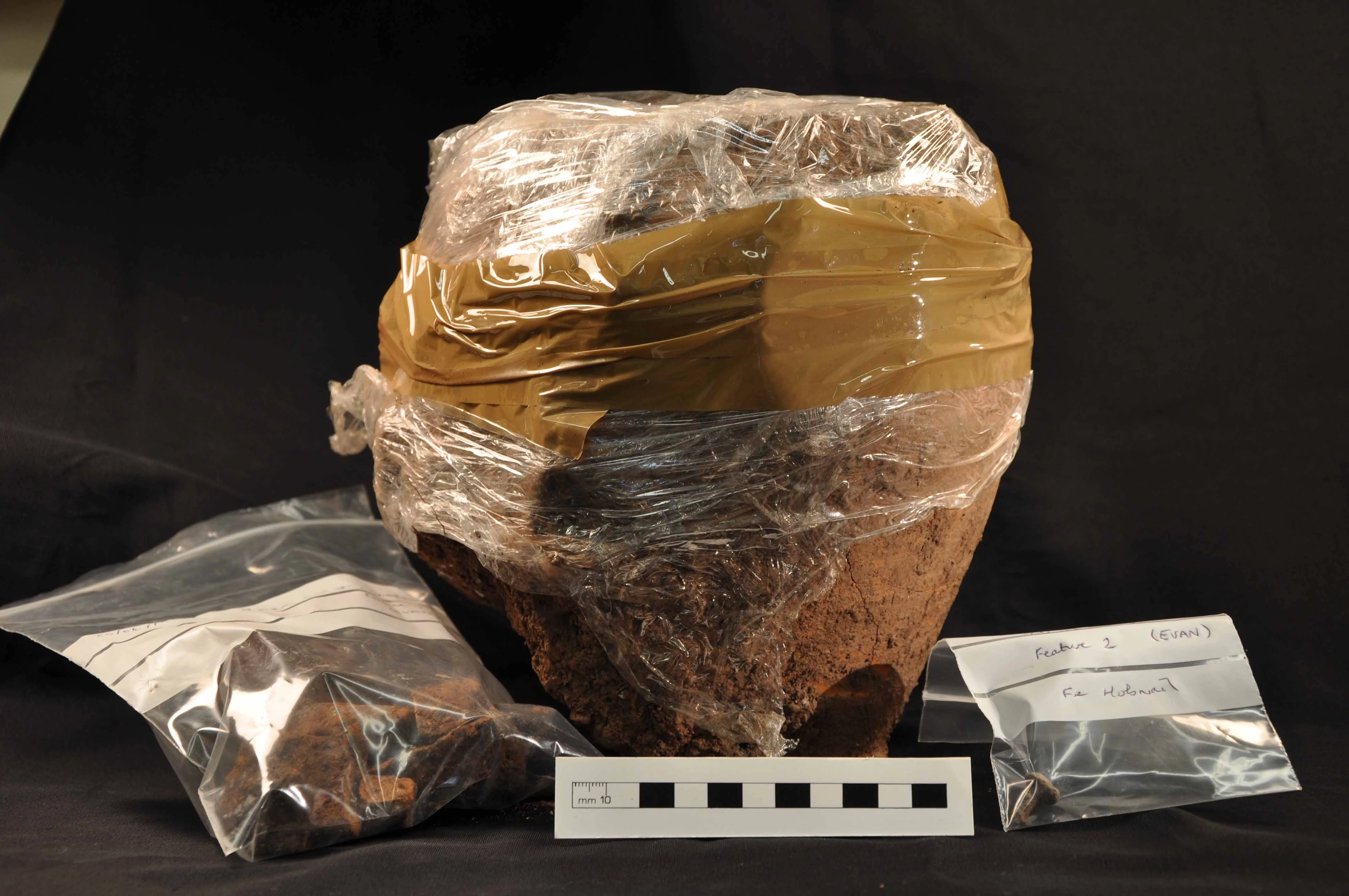
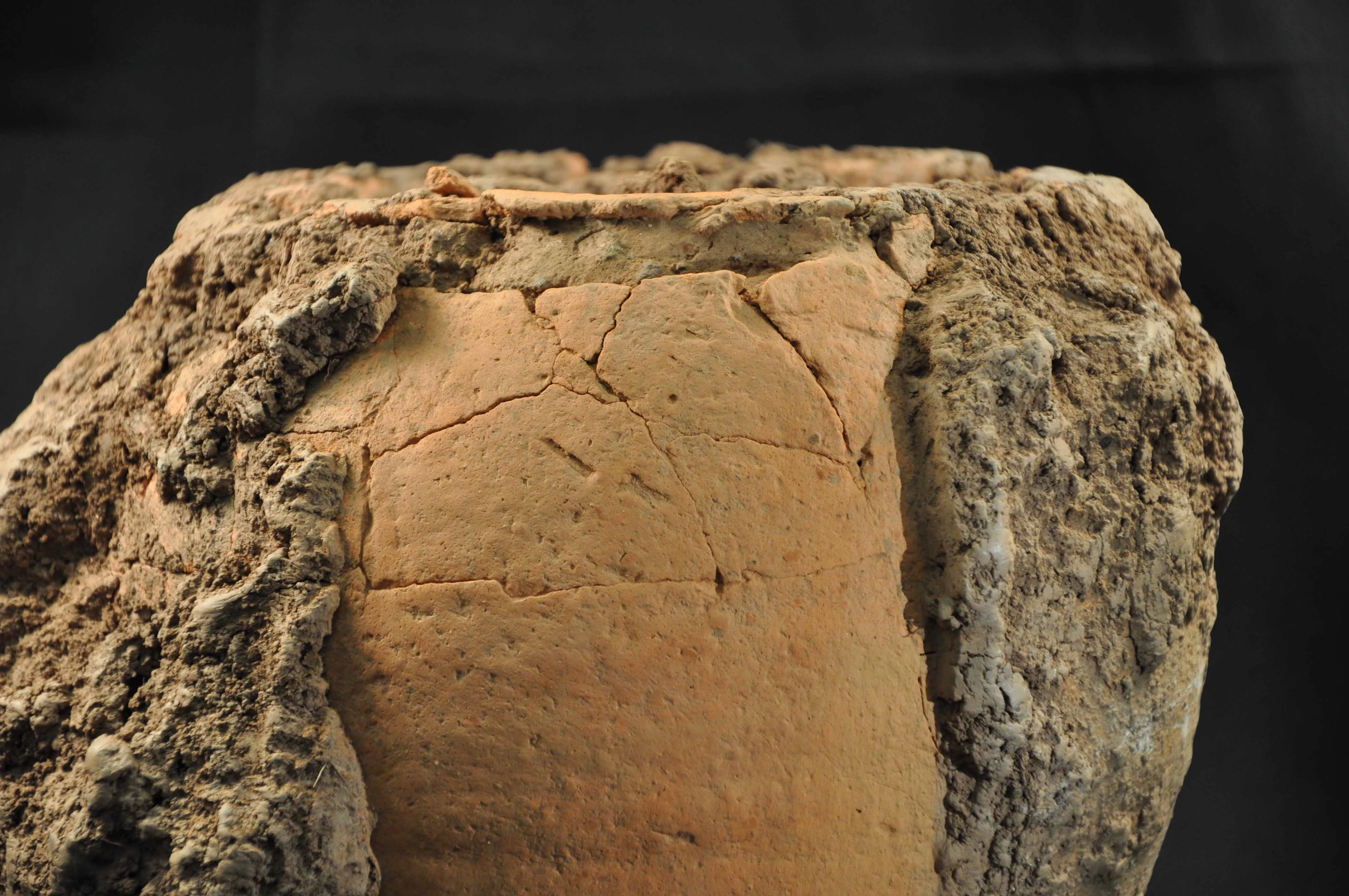
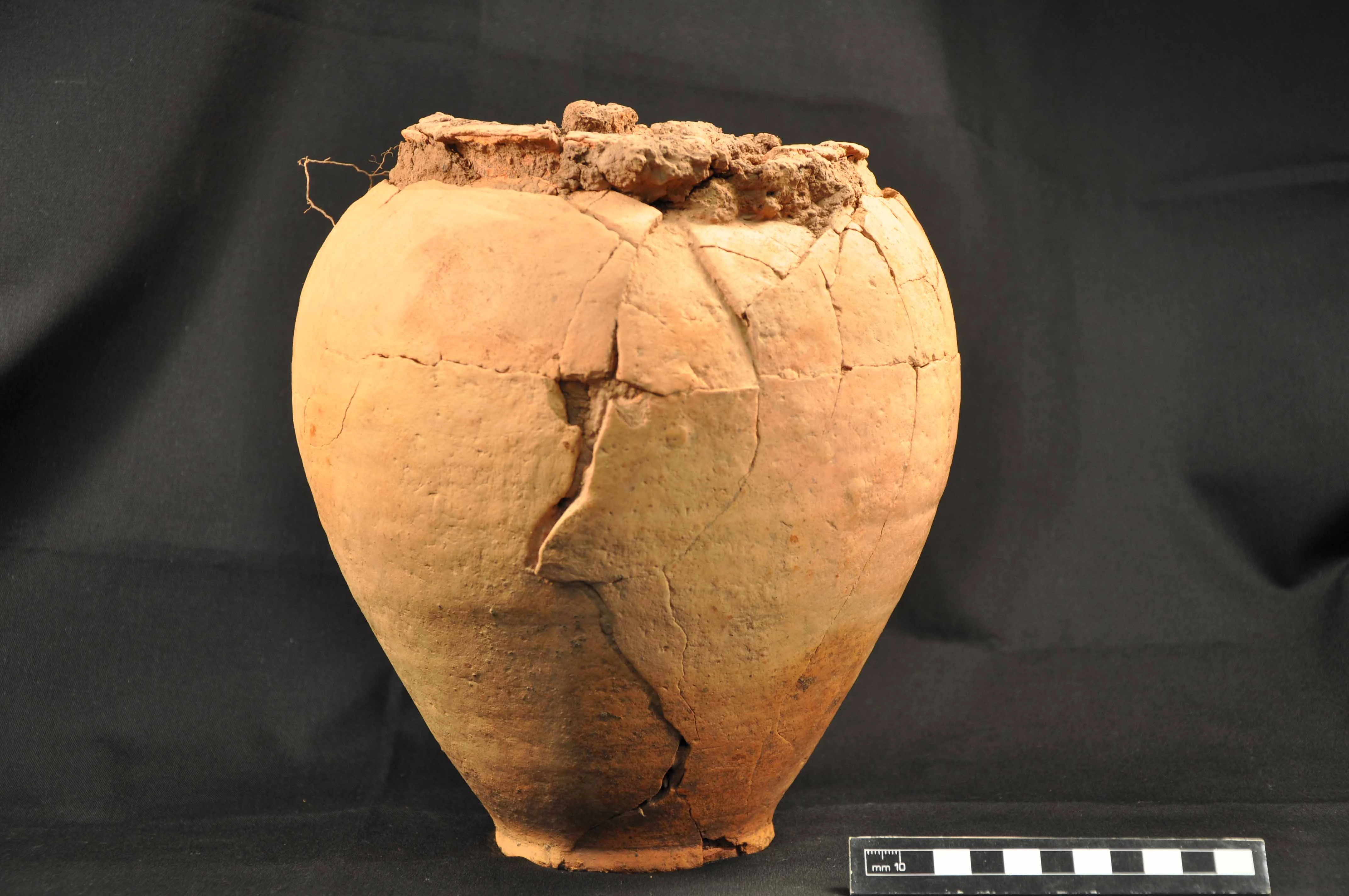

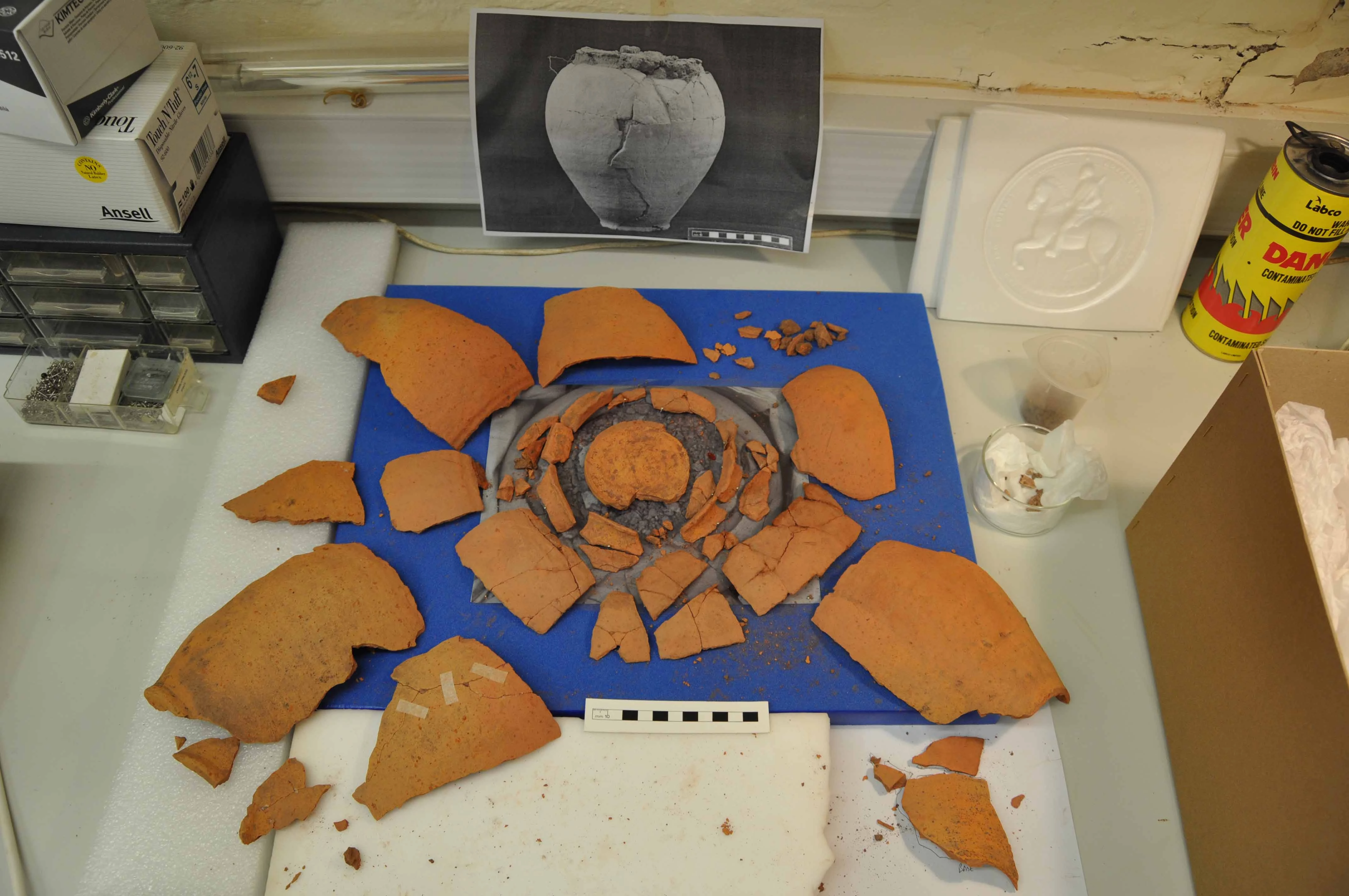

Comments - (2)
Positive site, where did u come up with the information on this posting? I have read a few of the articles on your website now, and I really like your style. Thanks for sharing this valuable information and please keep up the effective work!!